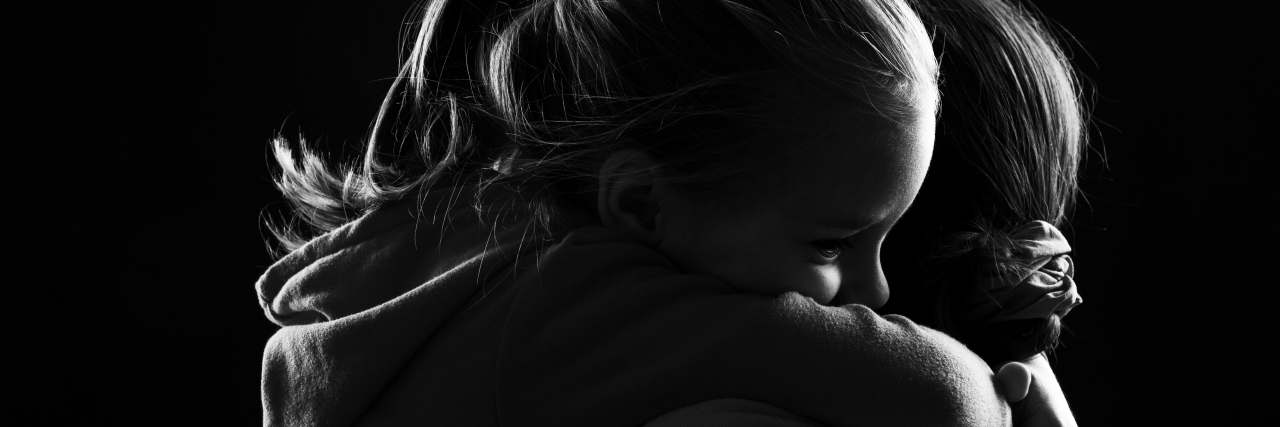Why I Cried When I Received My Daughter's Diagnosis
For parents of children with rare diseases, we are in a constant state of learning. We experience the joy of learning about this amazing new baby in our lives. We learn our child has differences compared to other children. We learn about those differences through a clinical diagnosis we oftentimes struggle to associate with our child. Sometimes our instincts tell us the diagnosis isn’t accurate. Now, rapidly changing science validates many of our parental instincts with a more accurate diagnosis. We want more families searching for answers and a diagnosis to take advantage of this new science.
My husband and I have watched our 9-year-old Jules grow into a happy, spicy, adventurous, clever, and cuddly little girl. She is a lover of all animals, relentless, a budding chef, strategically naughty and constantly moving. But while the average 9-year-old has a vocabulary of 7,000 words, Jules has a vocabulary of about 200 words.
At 15 months old, Jason and I began to be concerned. Jules stopped making eye contact. No words were coming. Like so many proud parents, we have video of our 9-month-old. You can hear our comments in the background, “Wow, look at how much she makes jargon. She is going to be an early talker.” But we were wrong. Words never came –just more complex, louder jargon. We made an appointment to see a developmental pediatrician and many other specialists. By age two, Juliet was diagnosed with persuasive developmental disorder – not otherwise specified (PDD-NOS) which is on the autism spectrum. We entered a new ecosystem of new doctors, specialists, and terminology.
In 2010, we took advantage of the genetic testing available at the time. We built a robust team of therapists providing 25 hours a week of early intervention in our home. We joined a local community of parents whose children had also received an autism diagnosis. But we noticed our Jules was presenting differently from these children as well. For so many with autism, routines are key. Often children on the spectrum prefer quiet places and predictable environments. But for Jules, louder is better; the more activity in her surroundings, the better. She loves to travel. She loves to go on airplanes. She loves the circus, Disney on Ice and Monster Jam.
We noticed these differences and continued to press the medical experts for better answers. Meanwhile whole exome sequencing (WES) became available to us locally at UCSF. We brought Jules to see what we could learn from this powerful new genomic technique. Since 2010 and Jules initial diagnosis of PDD-NOS, the field of genetics has grown with new discoveries all of the time. But in July 2016 came the discovery we were waiting to hear. Dr. Wendy Chung and Dr. Volkan Okur from Chung Lab at Columbia University identified a de novo genetic mutation of the CSNK2A1 gene on chromosome 20 causing Okur-Chung neurodevelopmental syndrome (OCNDS). Not long after with a simple blood test, UCSF was able to narrow Jules’ diagnosis from PDD-NOS to the more accurate OCNDS.There are three billion letters that make up the human genome. One very important letter on Jules’ dominant CSNK2A1 gene was mis-expressed causing OCNDS. Generally, we are each born with 40-60 mutations. The body typically reads over the “mistakes.” However, this particular gene is believed to be so important that one mis-expression is catastrophic to typical neurodevelopment. After I received the second diagnosis, I cried.
I cried because we had an answer. We had a described genetic syndrome that matched Jules’ symptoms.
I cried from relief. For years I had wondered what I did to cause Jules’ condition. Everyone tells you it isn’t your fault. But I always wondered if I should have done something differently during pregnancy. Should I have had one less beer in college? It was a relief to know I could not have prevented this from happening.
I cried because we had a community. However small, we had a like community of parents and children who were on a similar journey.
I cried because I had hope. I emailed Dr. Chung immediately to talk about what we could do to further OCNDS research and how we could best support individuals with OCNDS. During our first call, Dr. Chung was responsive, kind, compassionate, and thoughtful. She suggested we form a nonprofit organization for our community. And we did.
In January of this year, we answered our call to action and launched CSNK2A1 Foundation to focus on finding a cure for OCNDS and ensuring affected individuals have the opportunities and supports necessary to live full and happy lives. Dr. Chung and Dr. Okur serve on our scientific advisory board and have been instrumental in advising our board of directors on our scientific objectives for 2018-2020.
This is an exciting time for genetics and rare disease research. With CRISPR and many other scientific advances, we have a chance to cure OCNDS. And until we do, through research and collaboration we can develop a standard of care for those with OCNDS. In addition, there is a possibility we could discover drug therapies to alleviate OCNDS symptoms. We want children with OCNDS to live their best lives. We believe an accurate diagnosis is the first step of many.
By sharing our family’s journey, our hope is that someone who has an autism spectrum diagnosis that was once or is nonverbal/minimally verbal considers speaking with their doctor about whole exome sequencing (WES). WES is responsible for identifying many genetic conditions causing autism. Not everyone with OCNDS will be diagnosed with autism. But it is possible there are other individuals like Jules out there. Families and individuals like us, looking for answers, relief, community, and hope.
This story originally appeared on CSNK2a1 Foundation

